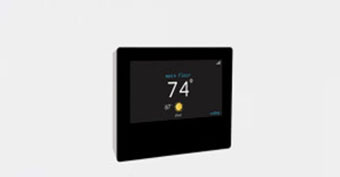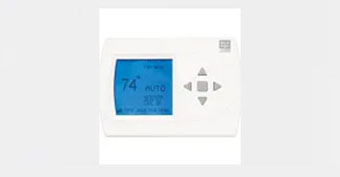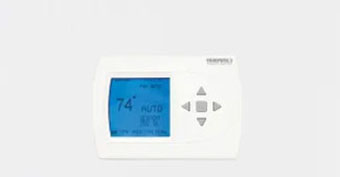Types of Thermostats
There are several types of thermostats available on the market, each designed to meet different needs and preferences. The most common types include manual, programmable, and smart thermostats, each offering unique features that enhance user control over home heating and cooling.
For instance, manual thermostats are basic and require manual adjustments, while programmable thermostats allow users to set schedules for temperature changes throughout the day. Smart thermostats take it a step further by offering remote access via smartphone apps, learning capabilities, and energy usage reports, making them ideal for tech-savvy homeowners.
Benefits of Upgrading Your Thermostat
Upgrading to a modern thermostat can significantly enhance your home's energy efficiency and comfort levels. Newer models are designed to optimize heating and cooling cycles, which can lead to lower energy bills and a more consistent indoor climate.
For example, smart thermostats can learn your schedule and adjust temperatures accordingly, reducing energy waste when you're not home. Additionally, many new thermostats offer features like geofencing, which adjusts the temperature based on your location, ensuring your home is always at the perfect temperature when you arrive.
Professional Thermostat Installation Services
While many homeowners may consider DIY installation for their new thermostat, professional installation services ensure that the device is set up correctly for optimal performance. HVAC professionals can address any compatibility issues with existing systems and ensure that the thermostat is calibrated accurately.
Moreover, professional installation often comes with warranties and support, giving homeowners peace of mind. Furnace Doctors, for example, offers expert installation services that not only guarantee proper setup but also provide ongoing maintenance options to keep your system running efficiently.
Choosing the Right Thermostat for Your Home
Selecting the right thermostat for your home involves considering various factors, including your heating and cooling systems, lifestyle, and budget. Understanding the differences between thermostat types can help you make an informed decision that best suits your needs.
For instance, if you have a busy schedule, a programmable or smart thermostat may be the best choice to automate temperature adjustments. Conversely, if you prefer simplicity and low upfront costs, a manual thermostat could be sufficient. Consulting with HVAC professionals can also provide valuable insights into the best options for your specific situation.
Types of Thermostats
There are several types of thermostats available on the market, each designed to meet different needs and preferences. The most common types include manual, programmable, and smart thermostats, each offering unique features that enhance user control over home heating and cooling.
For instance, manual thermostats are basic and require manual adjustments, while programmable thermostats allow users to set schedules for temperature changes throughout the day. Smart thermostats take it a step further by offering remote access via smartphone apps, learning capabilities, and energy usage reports, making them ideal for tech-savvy homeowners.
Benefits of Upgrading Your Thermostat
Upgrading to a modern thermostat can significantly enhance your home's energy efficiency and comfort levels. Newer models are designed to optimize heating and cooling cycles, which can lead to lower energy bills and a more consistent indoor climate.
For example, smart thermostats can learn your schedule and adjust temperatures accordingly, reducing energy waste when you're not home. Additionally, many new thermostats offer features like geofencing, which adjusts the temperature based on your location, ensuring your home is always at the perfect temperature when you arrive.
Professional Thermostat Installation Services
While many homeowners may consider DIY installation for their new thermostat, professional installation services ensure that the device is set up correctly for optimal performance. HVAC professionals can address any compatibility issues with existing systems and ensure that the thermostat is calibrated accurately.
Moreover, professional installation often comes with warranties and support, giving homeowners peace of mind. Furnace Doctors, for example, offers expert installation services that not only guarantee proper setup but also provide ongoing maintenance options to keep your system running efficiently.
Choosing the Right Thermostat for Your Home
Selecting the right thermostat for your home involves considering various factors, including your heating and cooling systems, lifestyle, and budget. Understanding the differences between thermostat types can help you make an informed decision that best suits your needs.
For instance, if you have a busy schedule, a programmable or smart thermostat may be the best choice to automate temperature adjustments. Conversely, if you prefer simplicity and low upfront costs, a manual thermostat could be sufficient. Consulting with HVAC professionals can also provide valuable insights into the best options for your specific situation.





